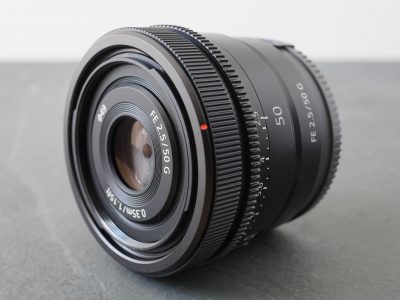Sony FE 50mm f2.5 G review
-
-
Written by Gordon Laing
Intro
The Sony FE 50mm f2.5 G is a compact standard prime lens for full-frame e-mount mirrorless cameras. Announced in March 2021 and costing $599, it delivers natural-looking standard coverage that’s ideal for general-purpose use. Long enough for simple portraits and small group shots, but short enough for some natural and urban views, and a practical option for grabbing details around town. As one of the most common focal lengths you know what to expect.
Meanwhile the f2.5 aperture may be dimmer than most rival 50s, but can still deliver a fair degree of blurring on full-frame bodies, while more importantly allowing a very compact and light design. In my video review below I’ll show you everything you need to know, but if you prefer a written version, keep scrolling for the highlights!
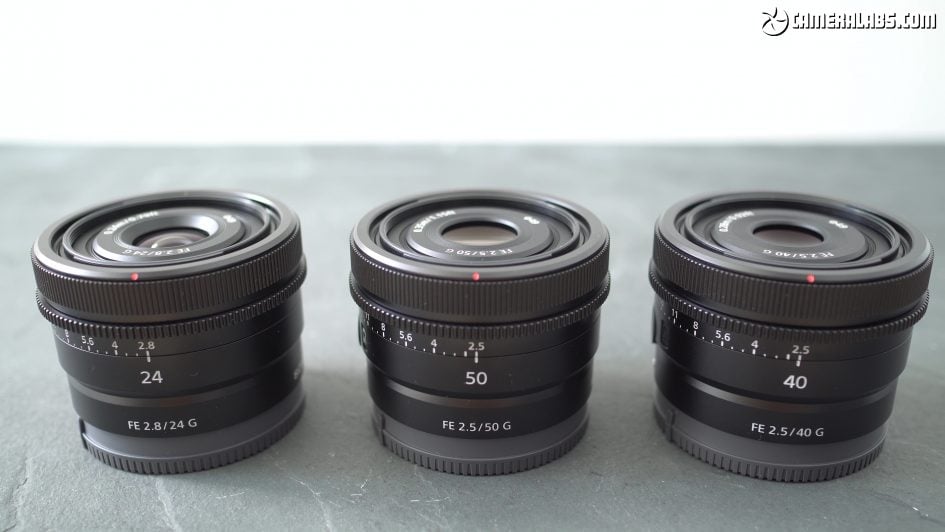
Above: The 50 2.5 was launched alongside a 24mm f2.8 and 40mm f2.5 as part of a compact triplet. All three share the same external styling and dimensions, not to mention the same $599 price, and I’ve made reviews of all three. Which is your favourite? Personally speaking I’m delighted Sony has made some new small lenses. It launched the full-frame Alpha mirrorless system with a compact 55 1.8 and 35 2.8 that really showcased the portability, but then turned its focus to high-performing but inevitably larger lenses. While I love the quality of the G Master series and appreciate some are small and light for their class, I feel Sony’s compact bodies deserve more small options for times when portability or discretion is most important.
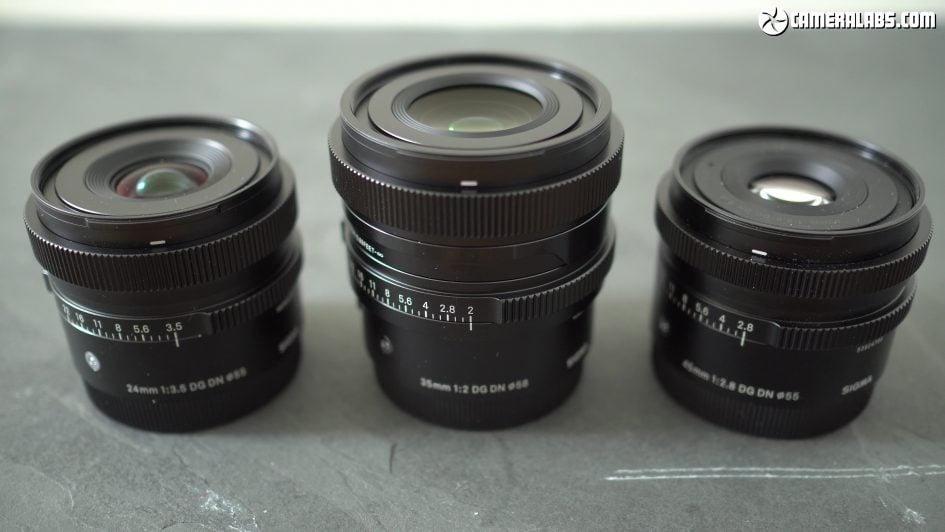
Above: Third parties saw the opportunity and ran with it, most notably Sigma which now has four compact primes available in the e-mount as part of its Contemporary I series. Here’s the Sigma 24, 35 and 45 models, with a 65 completing the set, and coincidentally the first three all cost roughly the same as the new Sonys.
With so many 50s available in the e-mount, from the budget 1.8 to the exotic 1.2 launched just one week earlier, it’s hard to choose models to compare with the new 50 2.5. So I’ve decided to go with a model that’s closest in size, weight and price, and even fairly close in age, albeit with a slightly shorter focal length: the Sigma 45mm f2.8 DG DN, although I’m also going to throw in some bonus comparisons against the Sony 40 2.5 as well as the 50 1.2 for fun as I tested all of them at the same time. In fact if you watch my reviews of those lenses, the results are all directly comparable with the ones I’m showing here.
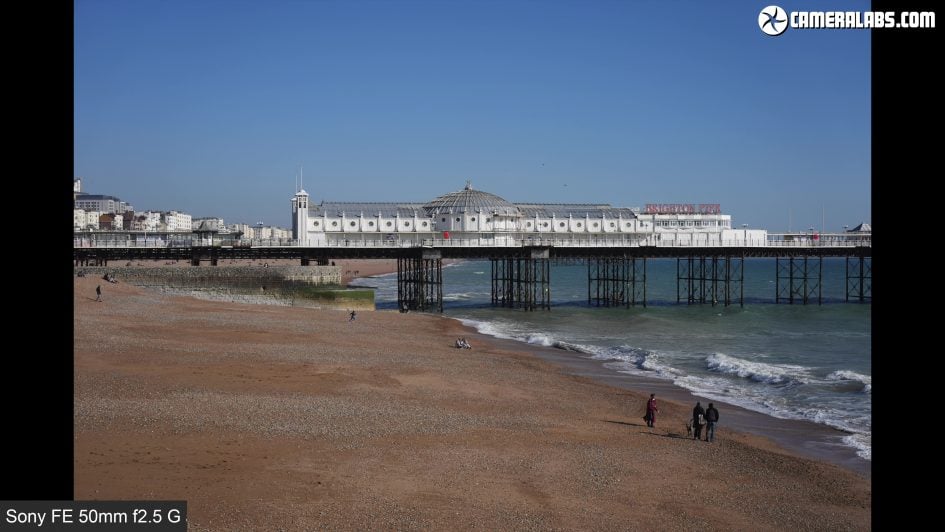
Above: Before anything else, let’s compare the coverage, starting with the Sony 50 2.5.
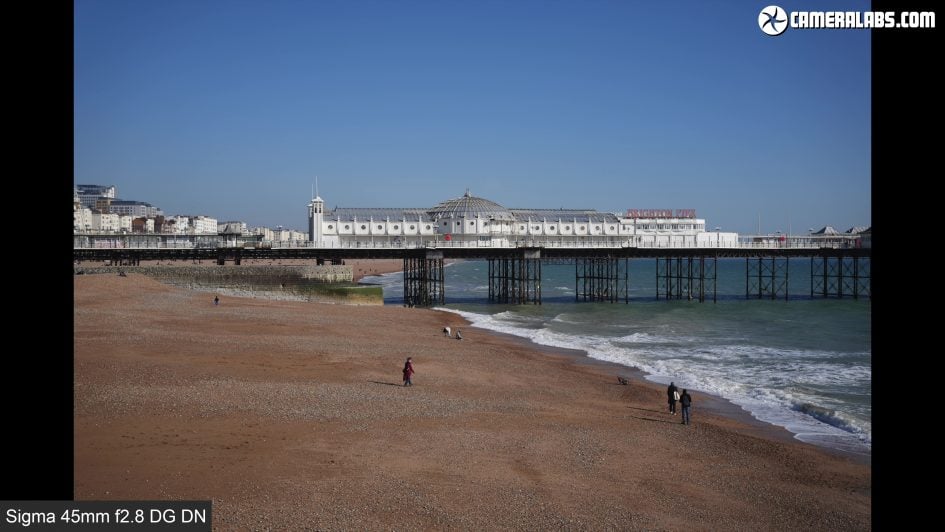
Above: Now here’s the Sigma 45 2.8 which is obviously a little wider but offering a similar proposition.
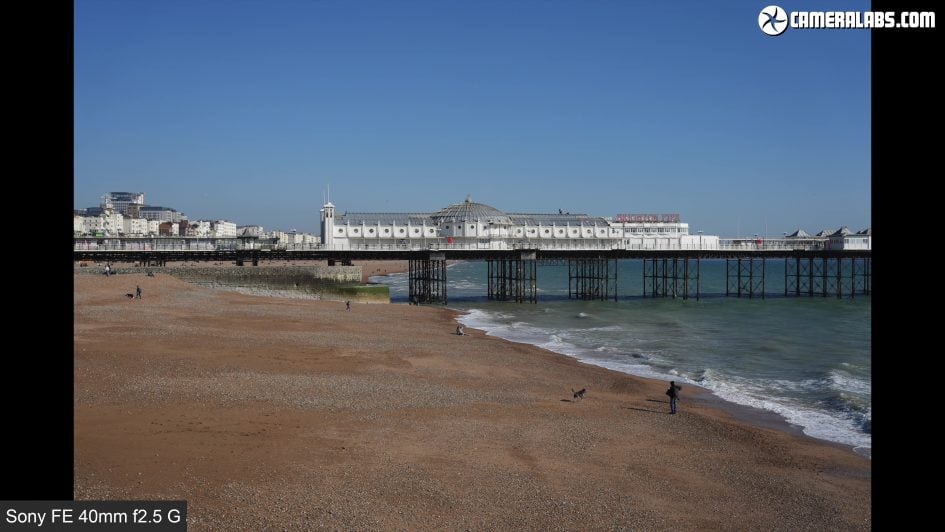
Above: You might also be interested in the Sony 40 2.5 which is a little wider still, bringing a fresh perspective to a general-purpose lens. We’re certainly not short of options.
At 68x45mm and weighing 174g, the Sony 50 2.5 can’t be described as a pancake lens, but remains comfortably shorter than the old 50 1.8. Alongside, Sigma’s 45 2.8 is fractionally narrower and longer, and a little heavier at 215g, but you wouldn’t choose one over the other on size or weight as they essentially become indistinguishable once mounted on a camera.
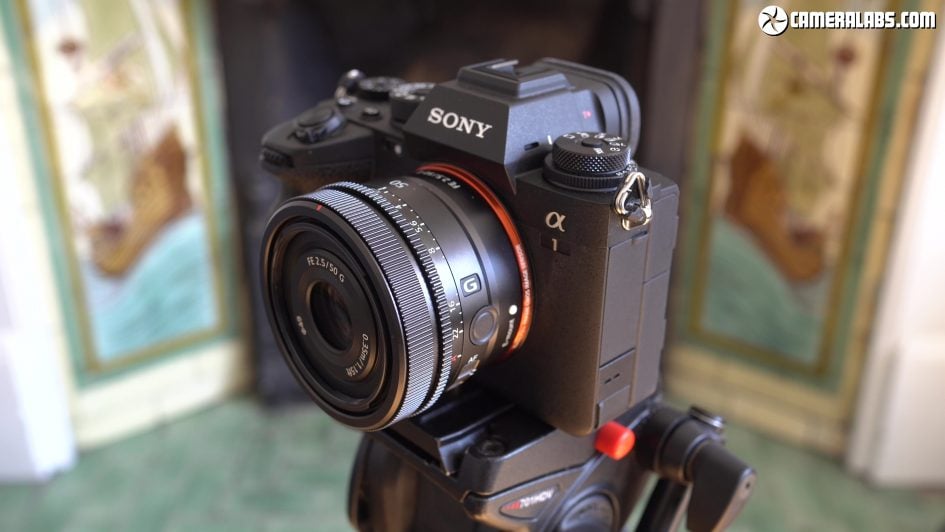
Above: They do have quite different controls though. The Sony 50 2.5 has a tactile but very narrow aperture ring with a smooth focusing ring positioned right alongside. Impressively Sony’s also managed to squeeze in a small customisable focus hold button as well as the chance to declick the aperture ring with a switch, features both missing from the Sigma not to mention most small lenses. The filter thread measures 49mm.
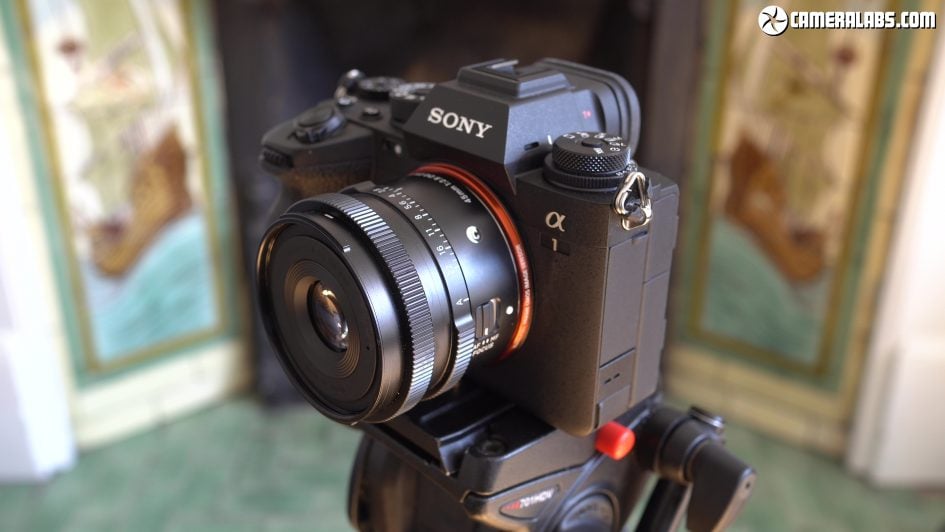
Above: Meanwhile the Sigma 45 2.8 positions its aperture ring further back with wider knurling on either side of the f-numbers. The manual focusing ring is similarly-damped to the Sony lens, but again the Sigma lacks the focus hold button and de-clickable options. It’s less-featured, but less cramped too. The Sigma takes larger 55mm filters.
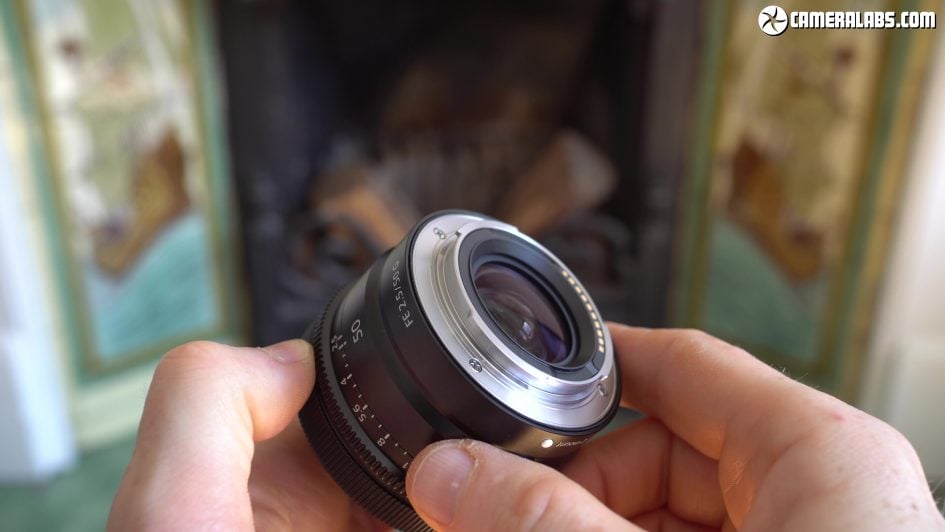
Above: Both lenses are described as being dust and splash-proof with subtle rubber grommets at their mounts, although Sigma’s sealing doesn’t extend to the whole barrel.
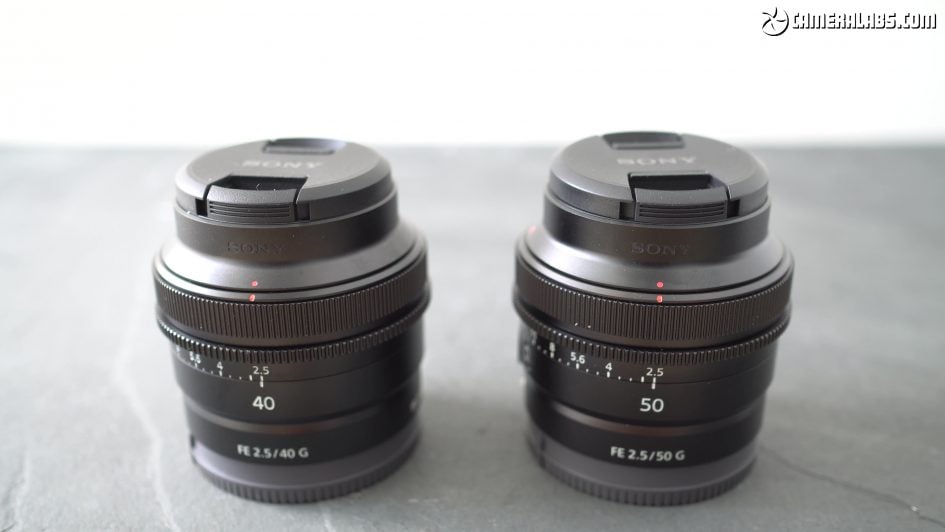
Above: Both lenses are supplied with very different hoods. For the 50 and 40 2.5, Sony’s opted for a design that slopes inwards and can be used with the cap on top without reaching inside.
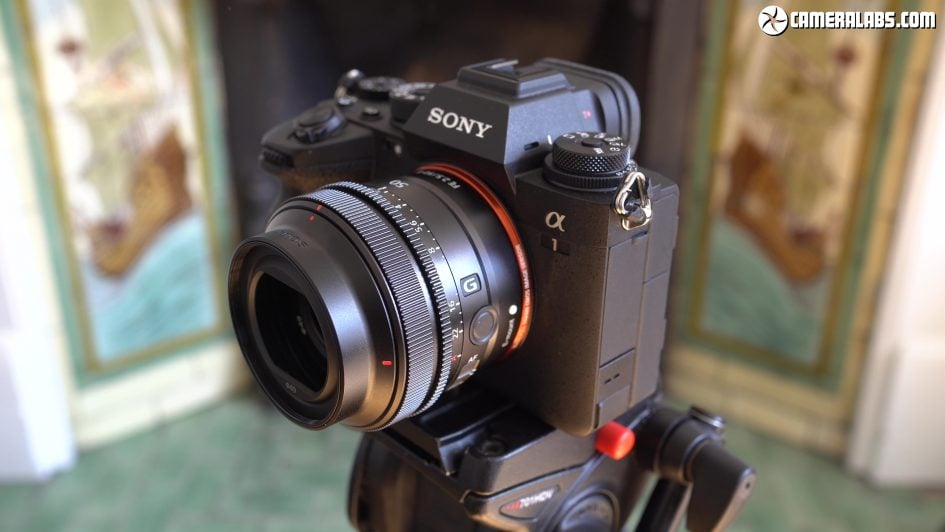
Above: Here’s the Sony hood.
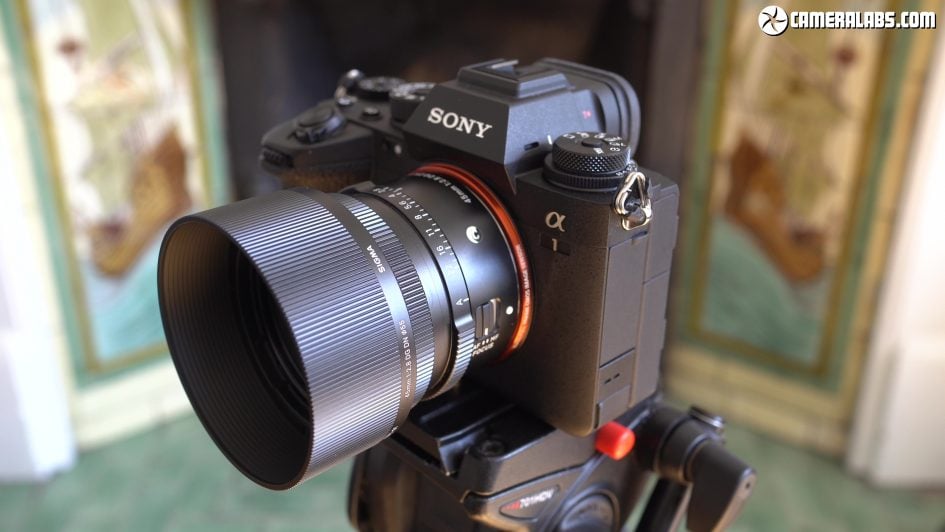
Above: While Sigma’s is a more traditional cylinder that’s clearly much more substantial. Both proved effective, but while Sony’s occupies much less space, I personally prefer the look of the Sigma.
In terms of focusing in Single AFS mode on the Alpha 1, the 50mm f2.5 G was swift, silent and confident. The 40 2.5 launched alongside is essentially the same here. Switching to the Sigma 45 2.8, again on the Alpha 1 at the maximum aperture and you’ll notice it’s still pretty quick, but there’s a tiny wobble at the end of each focus-pull to confirm. I’ve noticed this with Sigma lenses on Sony bodies before and it goes away in Continuous AFC mode, but in single AF there’s a minor contrast hunt. It doesn’t have any impact on day-to-day use though.
Switching to Wide area and Continuous AFC with human eye detection enabled, the Alpha 1 drives the 50mm f2.5 G very confidently. The 50 focal length may be shorter than a typical portrait lens but still works well for single or small group shots or presenting to camera. Let’s see how it measures up in a portrait test.
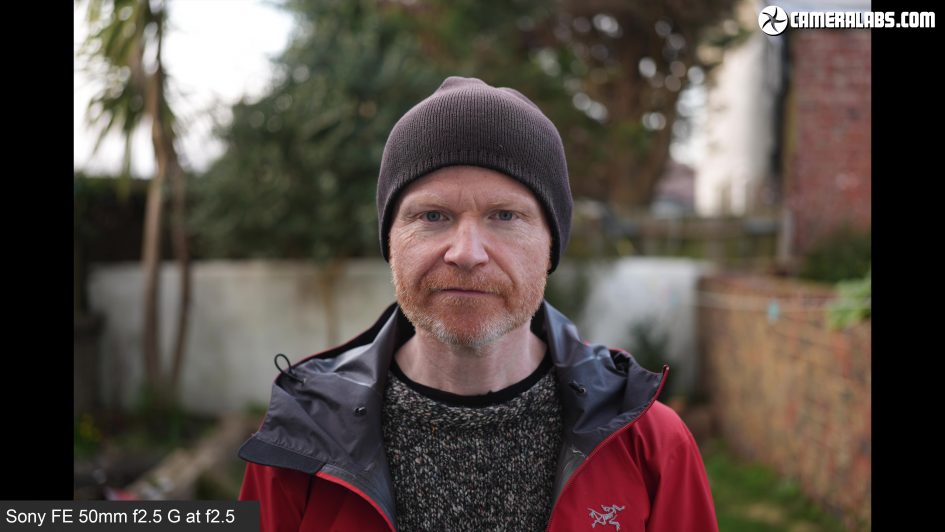
Above: Starting with the Sony 50 2.5 with its aperture wide-open, where it’s possible to achieve a small amount of blurring in the background.
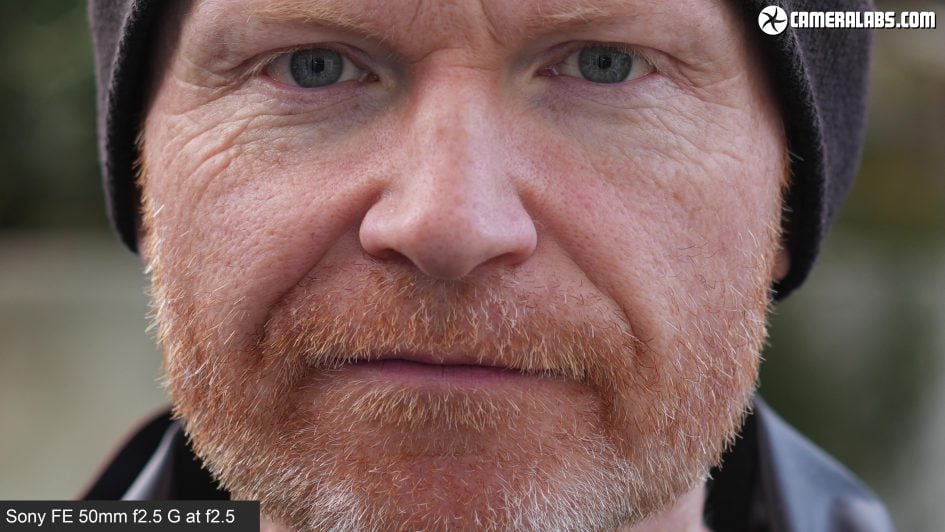
Above: Taking a closer look at the Sony portrait shows pin-sharp details on my eyeball as driven by the Alpha 1’s eye-detection, and across multiple portrait tests every single eye was equally sharp. Overall the lens proved to be very sharp on subject details even when coupled with an unforgiveably high resolution body.
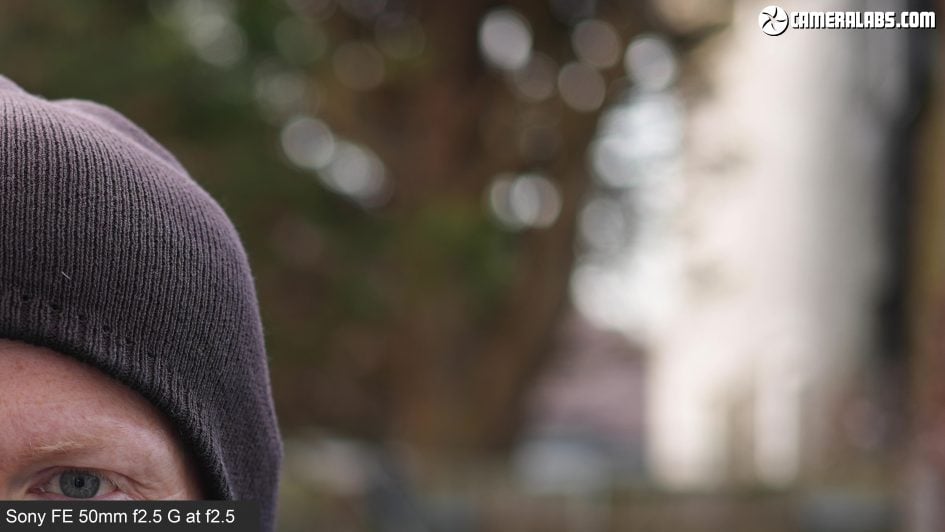
Above: Moving sideways for a look at the rendering shows a fair degree of subject separation and while it’s obviously not as significant as faster lenses, the effect can still be attractive. Like the 40 2.5, the edges to bokeh blobs are more defined than I’d like but the slightly longer focal length makes the artefacts less obvious.
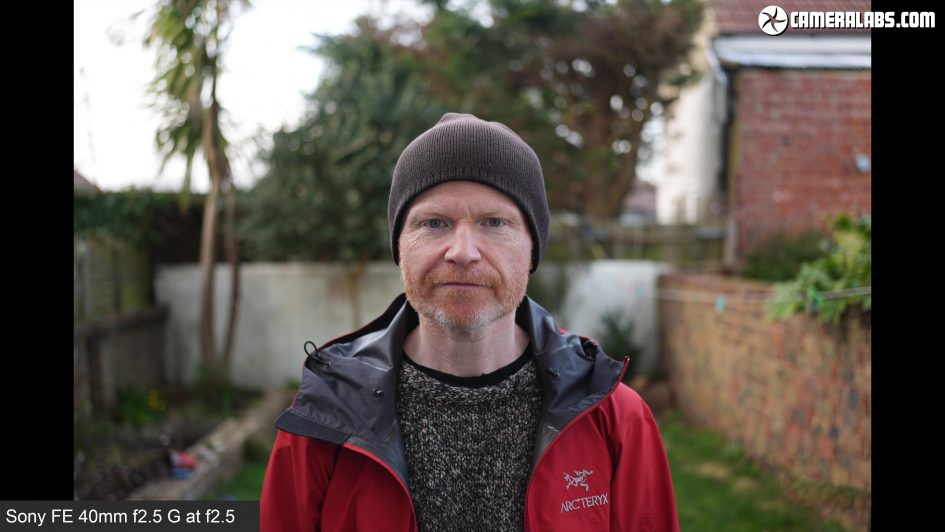
Above: Now for comparison, here’s the Sony 40 2.5 from the same position which obviously delivers a wider field-of-view.
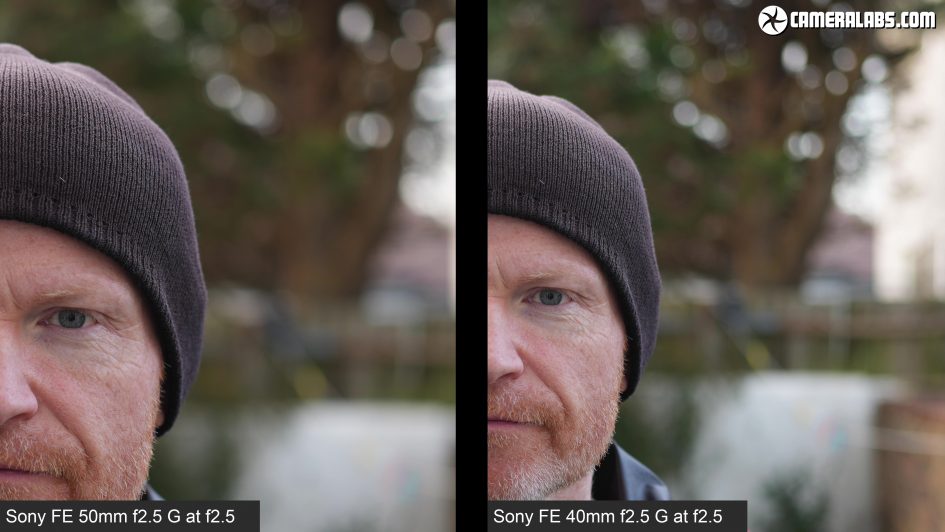
Above: Taking a closer look shows both lenses can capture very sharp details, although the 40’s shorter focal length means smaller bokeh blobs resulting in a slightly busier background.
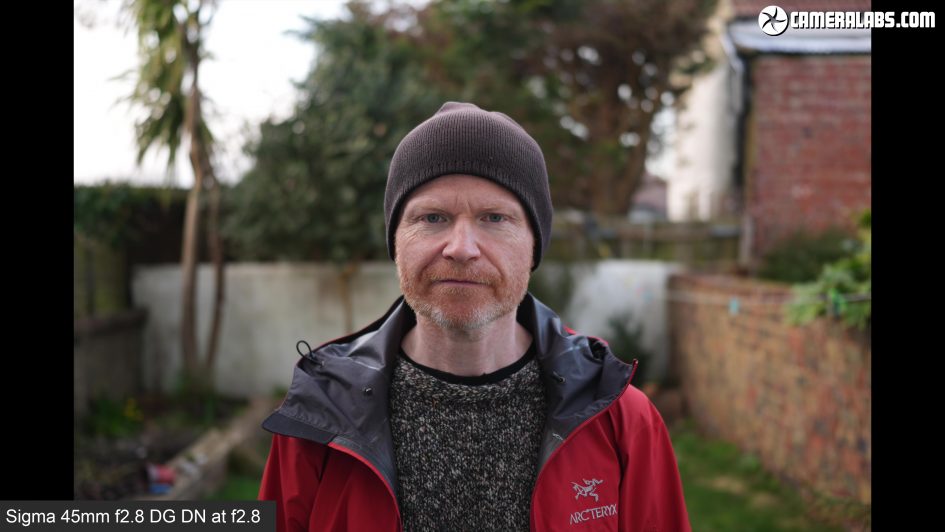
Above: Now for the Sigma 45 2.8 at f2.8 and again from the same distance. The coverage is roughly inbetween the Sony 40 and 50 as you’d expect, but I noticed a lower hit rate using eye detection than with the Sony lenses. I still got plenty of focused images, but not the 100% hit-rate of the Sony lenses.
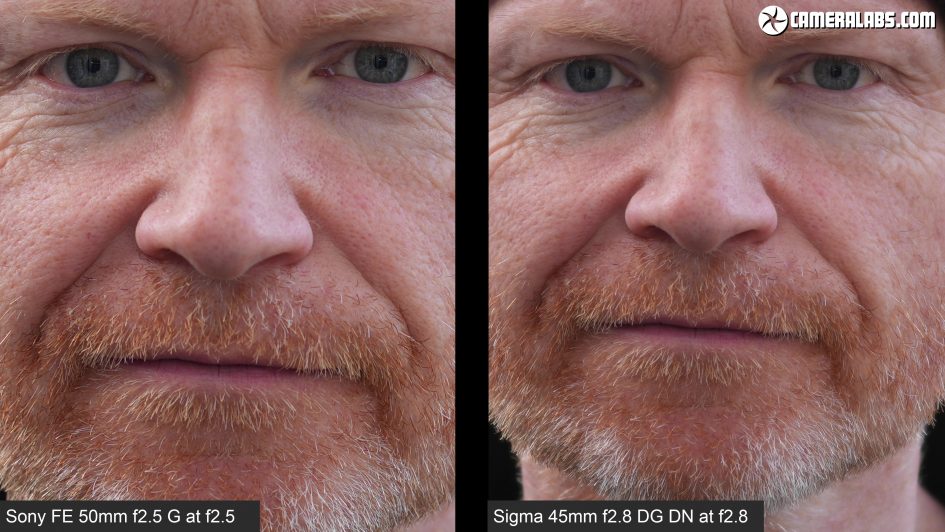
Above: With both portraits side by side, you’ll notice my eyeball on the Sony on the left is visibly crisper than the Sigma on the right. It’s not that the Sigma is bad or poorly focused, and viewed in isolation I’d be happy with it, it’s just that the Sony 50 is sharper.
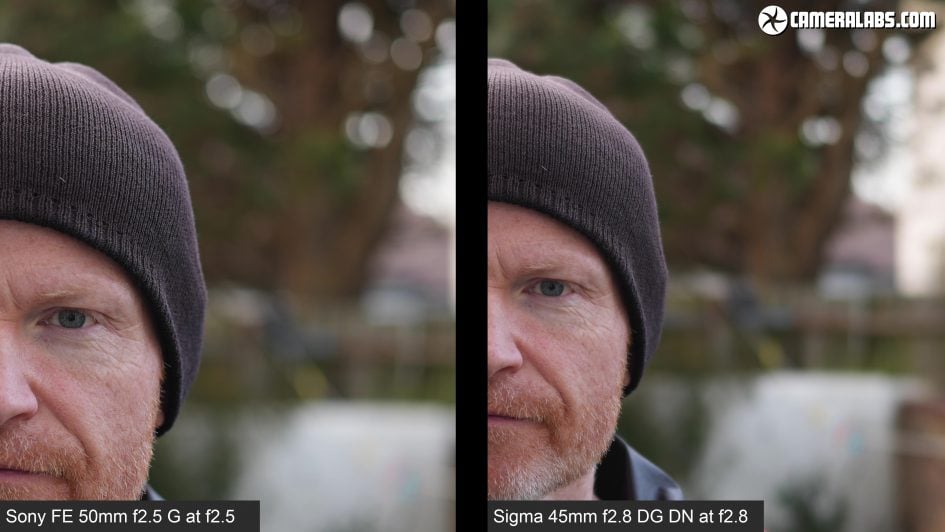
Above: That said, when you examine the blurred areas, the Sigma is visibly smoother with less-defined edges and a less busy-looking result overall. Bokeh style is a very personal thing though and some prefer one over another. So which lens did you prefer for the portrait test?
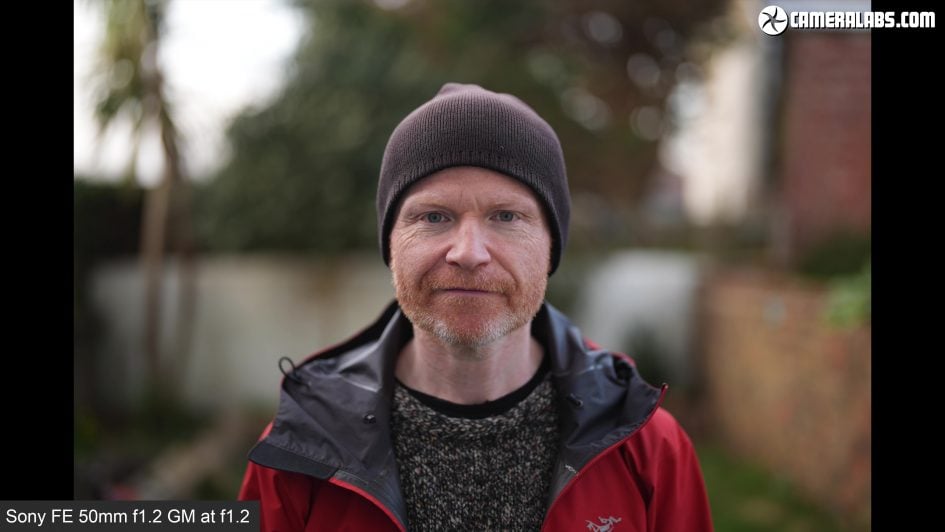
Above: Just before moving on, one last comparison purely for fun. So here’s the flagship 50 1.2 G Master at f1.2 as I tested them all at the same time. You may be wondering what you get by spending roughly three and a half times more and the answer is not just a much shallower depth-of-field, but sharper details and smoother rendering too.
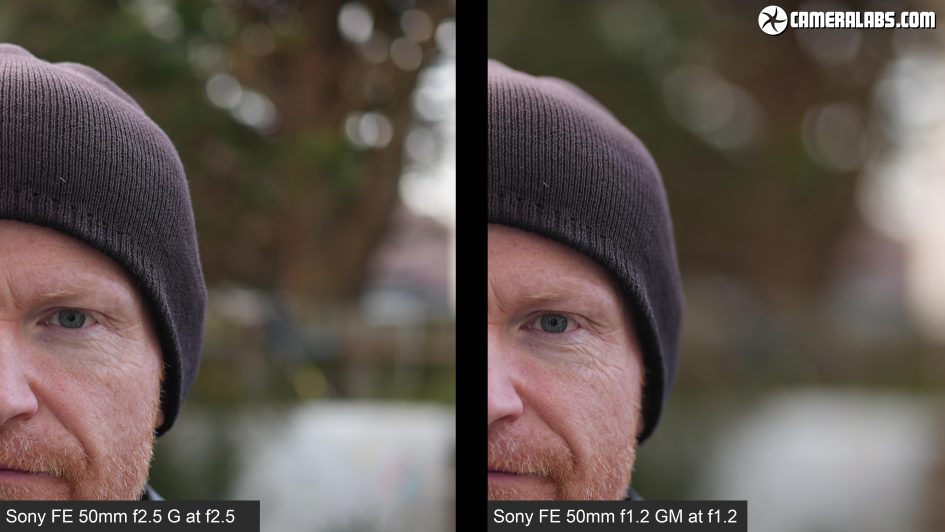
Above: Obviously the 50 1.2 is in a different class not just in price and quality but also size and weight, but since I had a comparable image I thought it would be fun to see.

Above: Next for the rendering of bokeh balls from close range, starting with the Sony 50 2.5 near to its closest focusing distance. From this distance it’s possible to generate reasonable bokeh balls, but unsurprisingly for a lens of this size and price, there’s visible outlining around their edges and concentric onion-ringing patterns within. With the lens closed to f4 or smaller, the seven-bladed diaphragm system also becomes visible with blobs taking on a seven-sided shape.
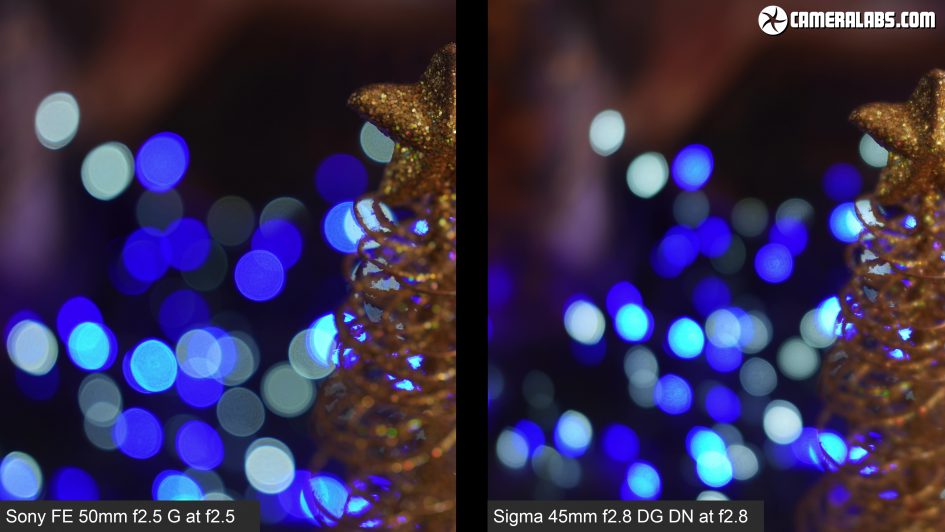
Above: Here’s the Sony 50 2.5 on the left and the Sigma 45 2.8 on the right, both at their maximum apertures and from the same distance. With a slightly longer focal length, it’s no surprise to find the Sony delivering a slightly tighter view with slightly bigger bokeh balls, but otherwise their rendering style is pretty similar. The Sigma on the right may exhibit a little less outlining on its blobs, but both contain textures and share similar shapes as you close their apertures-down.
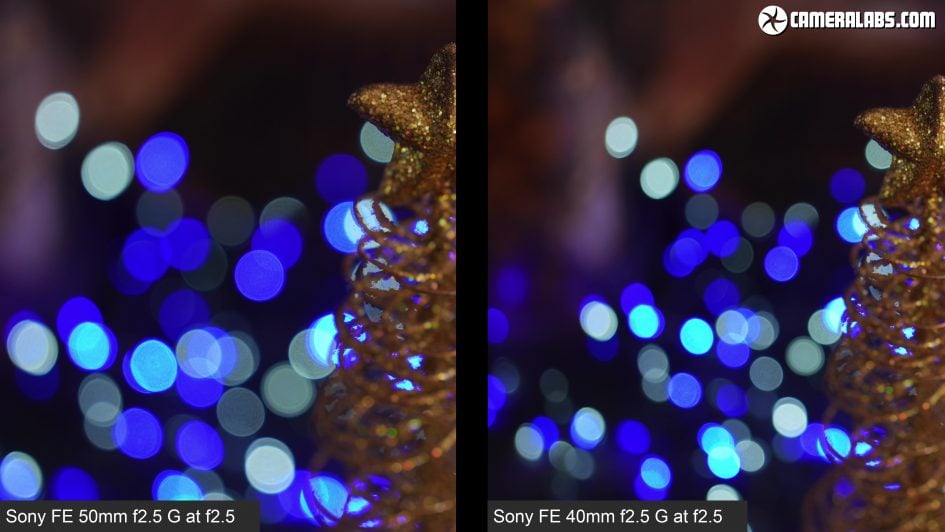
Above: Switching the Sigma on the right for the Sony 40 2.5 understandably sees the bokeh balls shrink further. The artefacts seen on the 50 2.5 are shared on the wider model, with both showing a similar rendering style.
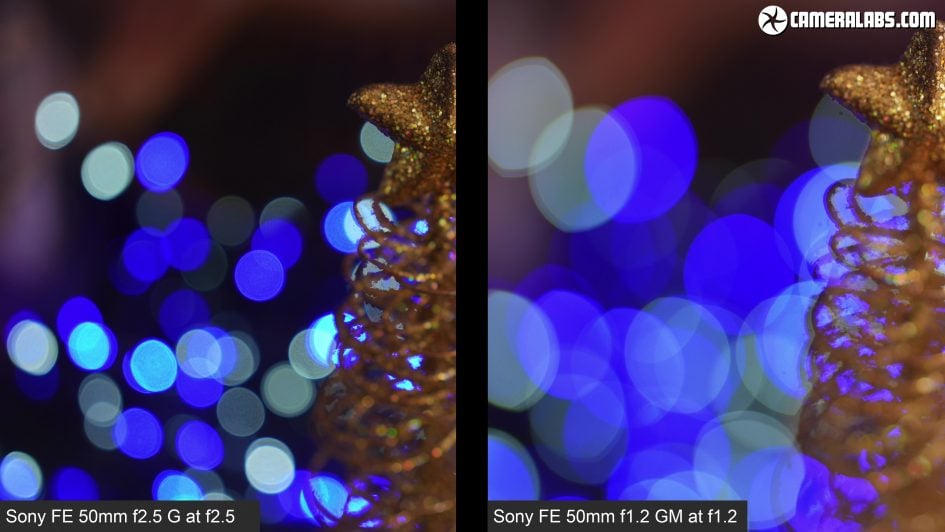
Above: Now for fun on the right is the 50 1.2 wide-open and clearly showing-off its giant balls. But size isn’t everything! What impresses equally on the more expensive lens is the lack of outlining or concentric ring patterns. When you spend a lot on a high-end lens, this is the kind of performance you can expect, but to be fair the 50 2.5 is a strong performer for the money.
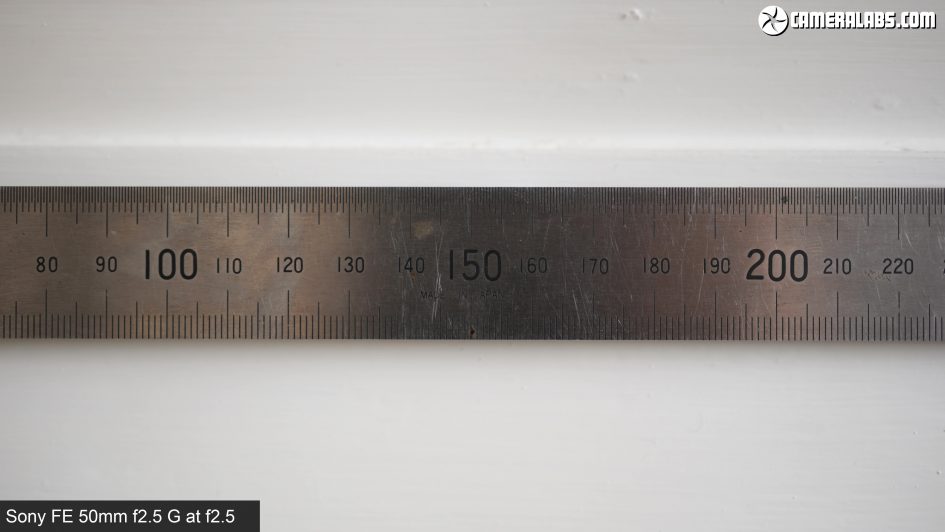
Above: In terms of minimum focusing distances, Sony quotes 35cm with autofocus or 31 with manual, and here’s what I could achieve when manually focusing – reproducing a subject size of 16cm, and even with the aperture wide-open the details are pretty sharp right up to the edges.
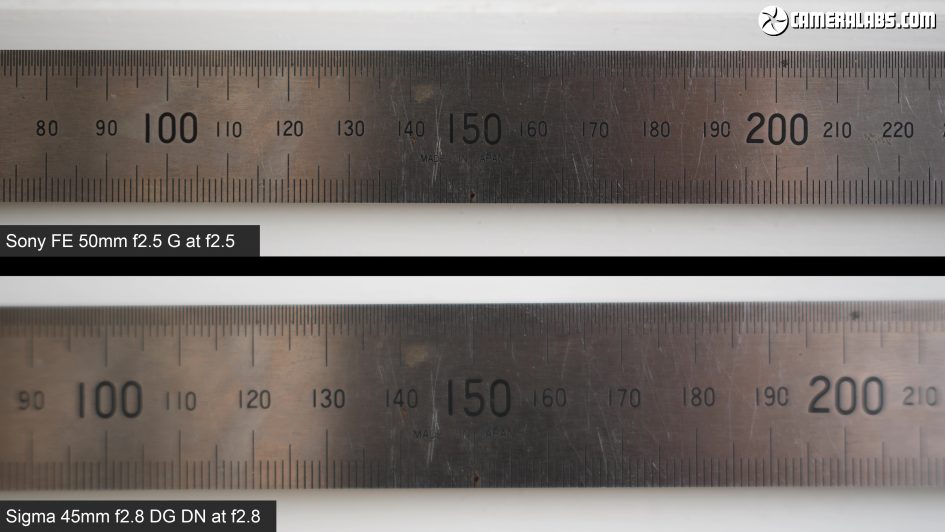
Above: Now here’s the Sony 50 at the top and the Sigma 45 at the bottom, both from their closest manually-focused distances and their maximum apertures. The Sigma at the bottom is delivering greater magnification, reproducing 13cm across the frame, but with their apertures wide-open the Sigma becomes much softer at the edges from this distance.
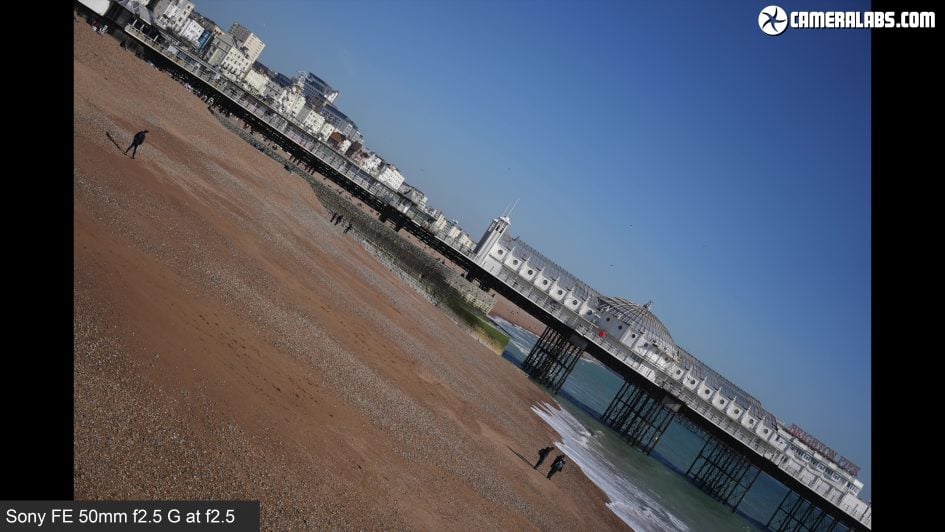
Above: At the other end of the scale, here’s my distant landscape scene, starting with the Sony 50 2.5 on the Alpha 1 at f2.5, and with the view angled so that details run right into the corners.
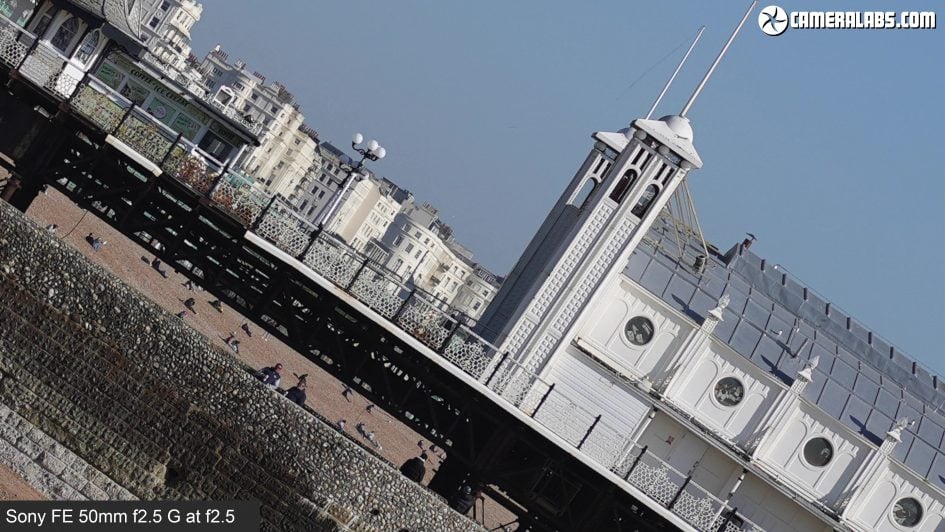
Above: Zooming-in on the middle section reveals plenty of fine details at the maximum aperture with no need to close it down to improve the quality further.
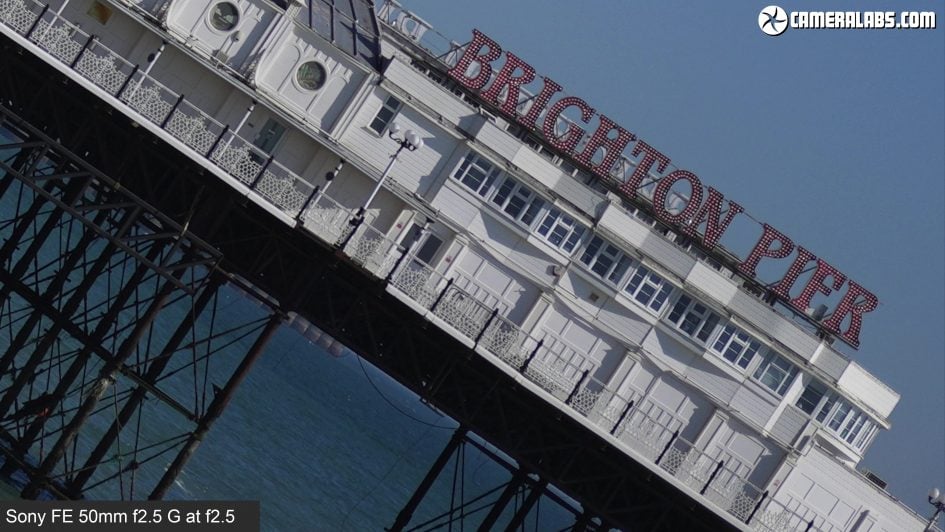
Above: Moving out to the far corner shows the lens can maintain the detail again with the aperture wide-open which is a lot more than can be said for the budget 50 1.8 – indeed if you have that lens and have ever been frustrated by its fall-off in sharpness towards the edges, the newer 50 2.5 could be a good upgrade. Vignetting or darkening in the corners is also well-behaved, and while closing the aperture will reduce the effect as well as slightly boosting the sharpness, I’m very happy with the performance wide-open. Checking the RAW files shows the JPEGs are benefitting from some correction to vignetting with the default Alpha 1 settings, but impressively for a lens of its size, there appears to be little or no geometric correction needing to take place.
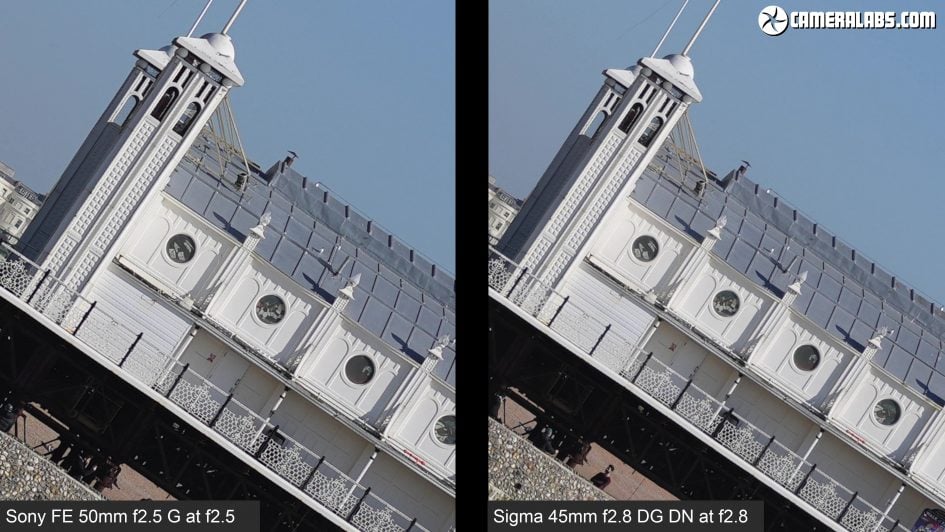
Above: With the Sony 50 2.5 on the left and the Sigma 45 2.8 on the right, both showing magnified views of their central areas, you’ll see both perform very well at their respective maximum apertures, although obviously the Sigma’s view is a little wider due to its slightly shorter focal length.
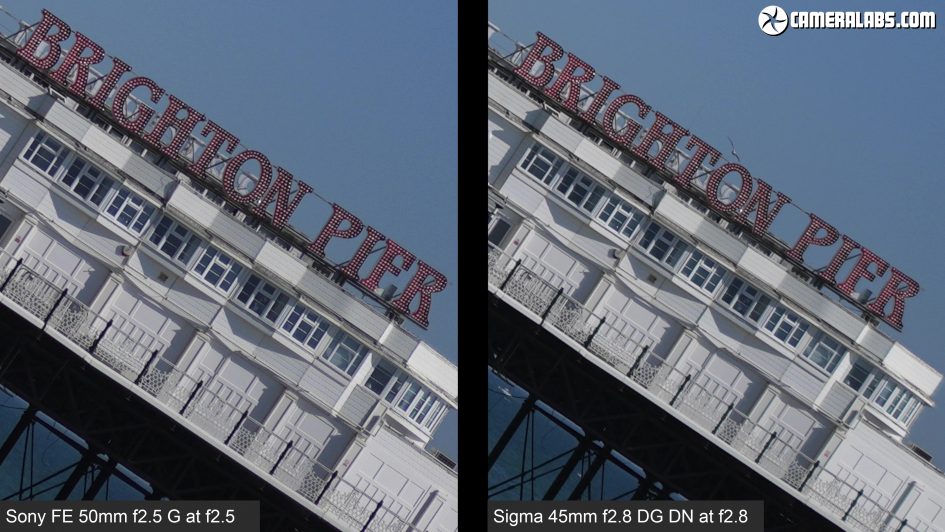
Above: Switching to their corners and again that difference in focal length means we’re looking at different details but from the same part of the frame. I’d say the Sony 50 has an edge in the very extreme corners, but you don’t need to move in very much before they’re effectively neck in neck. So a minor win for Sony here, but both lenses are doing well with distant subjects even wide-open and draw alongside when stopped down a little.
In terms of autofocus for movies, the 50 2.5 is smooth, quiet and confident for single focus-pulls, just like the 40 2.5. For comparison the Sigma 45 2.8 also refocuses smoothly and quietly, and now that it’s in AFC mode, the distracting hunting seen on the AFS test earlier has gone. So a draw here.
With face and eye detection, the Sony 50 2.5 on the Alpha 1 easily tracks me around the frame. 50mm is a great focal length for presenting pieces to camera as it’s more flattering than a wide lens with greater opportunities for blurring the background. The Sigma 45 2.8 also works pretty seamlessly for face and eye tracking. Maybe there’s a hint of the Sigma being a fraction less responsive than the Sony lens here, but it really is minimal.
And finally a focus breathing test starting with the Sony 50 2.5 manually focusing from infinity to the closest distance and back again at f22. As you focus the lens closer, the field of view reduces noticeably, an artefact that I’ve seen on a number of Sony lenses. It’s something that bothers some videographers or focus stackers, but won’t be an issue for most stills photography. In comparison the Sigma 45 2.8 exhibits much lower breathing than the Sony. Depending on your usage, this may make the Sigma more attractive.
Just before my verdict, one more focus breathing comparison with the high-end 50 1.2. As you can see, it also suffers from almost the same degree of focus breathing as the cheaper 2.5 G, revealing even Sony’s best lenses aren’t immune from it. All lens designs involve compromises and breathing seems to be the one Sony’s happy to accept.
Check prices on the Sony FE 50mm f2.5 G at B&H, Adorama, WEX, or Calumet.de. Alternatively get yourself a copy of my In Camera book or treat me to a coffee! Thanks!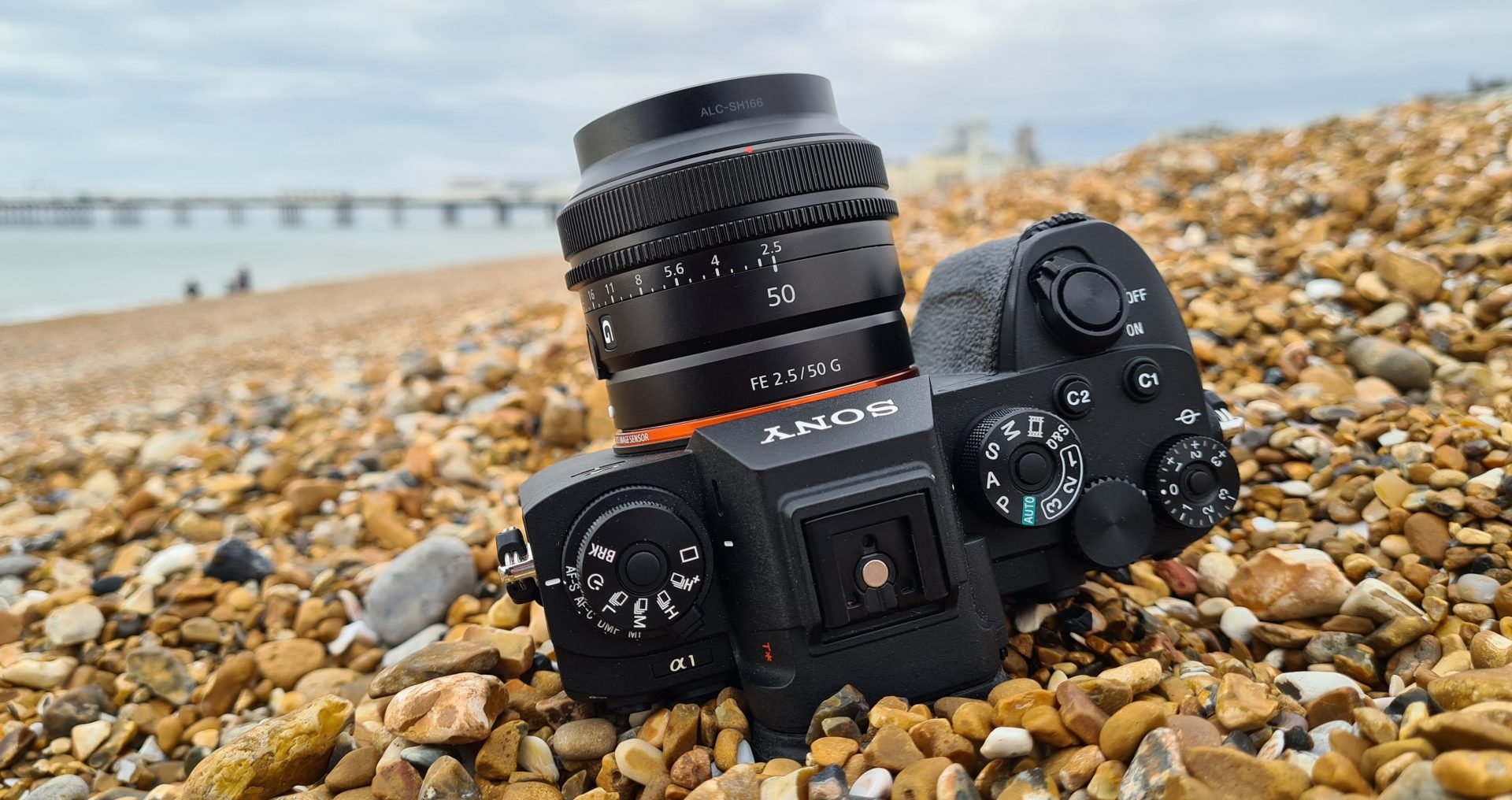
 The Sony FE 50mm f2.5 G is a compact standard prime lens that aims for portability but also delivers on quality, even mounted on modern high-res bodies with the aperture wide-open. Details are sharp across the frame whether shooting closeups, portraits or landscape views, and the quality out-of-the-gate proves it’s very practical to shoot at the maximum aperture. Focusing is quick, precise and quiet, and it’s impressive to find a focus hold button, declickable aperture and weather-sealing all crammed into such a small barrel. My only complaints are focus breathing (which will mostly only bother some videographers) and background rendering that’s inevitably busier and less smooth than higher-end models. Overall the Sony FE 50 2.5 G stands out in a crowded market of standard primes by packing respectable quality and decent features into a compact barrel at a tempting mid-range price. It out-performs budget 50s and is sufficiently good to leave the more expensive models to perfectionists and bokeh fiends. A solid general-purpose prime for anyone who values portability without compromising quality.
The Sony FE 50mm f2.5 G is a compact standard prime lens that aims for portability but also delivers on quality, even mounted on modern high-res bodies with the aperture wide-open. Details are sharp across the frame whether shooting closeups, portraits or landscape views, and the quality out-of-the-gate proves it’s very practical to shoot at the maximum aperture. Focusing is quick, precise and quiet, and it’s impressive to find a focus hold button, declickable aperture and weather-sealing all crammed into such a small barrel. My only complaints are focus breathing (which will mostly only bother some videographers) and background rendering that’s inevitably busier and less smooth than higher-end models. Overall the Sony FE 50 2.5 G stands out in a crowded market of standard primes by packing respectable quality and decent features into a compact barrel at a tempting mid-range price. It out-performs budget 50s and is sufficiently good to leave the more expensive models to perfectionists and bokeh fiends. A solid general-purpose prime for anyone who values portability without compromising quality.



